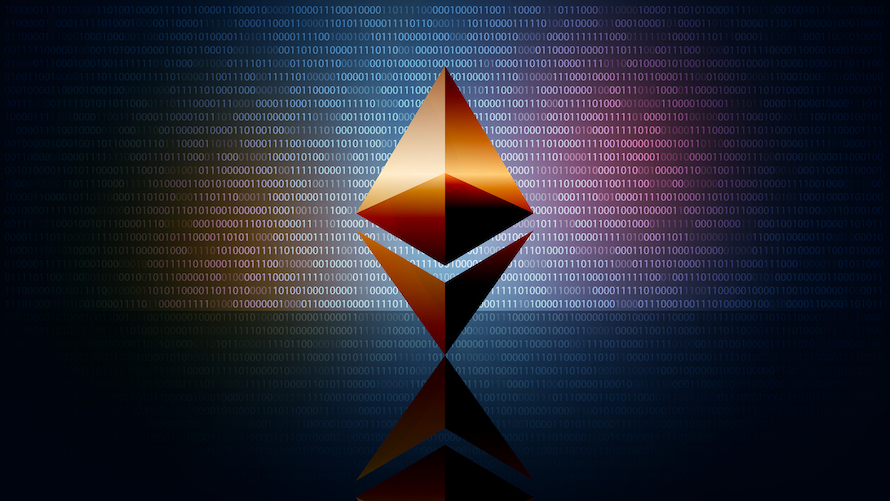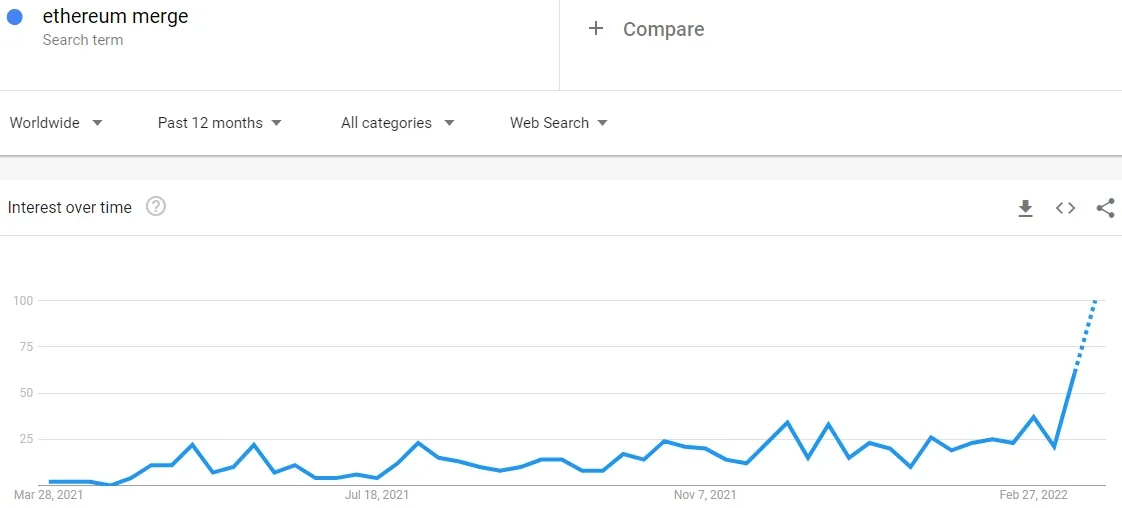Canadians, Australians, and Singaporeans were the most curious about the next Ethereum Merge.

Remember when you were surfing the web at work and intermittently looking at cryptocurrency prices between social media breaks when suddenly the words “Ethereum Merge” popped up everywhere? Well, you are not alone.
According to data from Google Trends, over the past two weeks, people around the world have been so eager to learn about the Ethereum merge that the search term has peaked in popularity everywhere at once.
On March 6, “Ethereum Merge” was about 21% more popular than it is today. An explosion of searches for this date saw the term reach an unprecedented peak of popularity around the world on March 20th.

Canada accounts for the most searches in the last 365 days, so Trends assigns the country a score of 100, giving it the highest possible score for “Ethereum Merge” searches in the population.
In Canada, the term peaked in popularity on March 13–19. By March 26, however, it had fallen to 39% of that.
Second is the people of Australia, who have completed 84% of the polls Canadians have conducted in the last year in relation to the size of their population.

Third were the Singaporeans. They were 80% as curious about the Ethereum Merge as the Canadians.
In fourth place was the American population: they were 76% more interested than Canadians.
The British and Dutch populations, in turn, ranked fifth and sixth, respectively, with both groups conducting about 52% of searches as Canadian, proportionally.
In the UK, “Ethereum Merge” reached around 43% of its peak popularity on March 6th. It only began to rise on March 13, after which the term peaked in popularity.

It should be noted that the British were already curious about “Ethereum Merge”. For example, in the period 19-25 December 2021, the term was around 99% more popular in the UK than it is today.
Regarding related search topics, Google Trends reports “Proof of Stake“, “Ethereum Merge Date” and “Ethereum 2.0 Release Date”. This is not surprising, since all these topics are closely related.
What is an Ethereum Merge?
If you’ve read this far and still have no idea what an Ethereum Merge is, congratulations for not having Googled it, and fear not Coinscreed readers, because here is a brief introduction.
Fusion may seem like a chapter in humanity’s journey to the singularity, but it’s actually not that scary. Think of it as the next step in Ethereum 2.0, recently dubbed the “consensus layer.”
Like Bitcoin, Ethereum currently uses a Proof-of-Work (PoW) consensus mechanism, which means Ethereum miners (essentially 24/7 computers) with the highest computing power can validate more transactions on the blockchain and receive your rewards. This engine was also heavily criticized for its high power consumption.
During the merger, the Ethereum main net will be “merged” with a Proof-of-Stake (PoS) system called Beacon Chain.
From then on, Ethereum validators that stake more cryptocurrencies will validate more transactions.
The Ethereum Foundation also claims that 2.0 will fix known Ethereum scalability issues.
Currently, the network only processes about 30 transactions per second (TPS), but after the merger, that number is expected to rise to 100,000.
Better scalability will also reduce costly network gas expenses.
The foundation claims that this mechanism will also reduce grid energy consumption by 99.95%.
Speaking at the Camp Ethereal Summit earlier this year, Joseph Lubin, CEO of ConsenSys and co-founder of Ethereum, said: “The merger will end the proof of work, it will end the Ethereum carbon or energy balance issue, everything will be gone.
Lubin also said that Ethereum 2.0 is expected to launch “in Q2 or possibly Q3” of this year.
